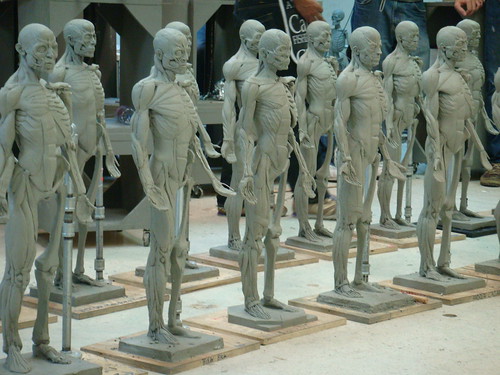 The logical fallacy exists on a daily basis in the orthopedic world. Perhaps more importantly, it costs the health care world millions of dollars and a tremendous unnecessary burden psychologically.
The logical fallacy exists on a daily basis in the orthopedic world. Perhaps more importantly, it costs the health care world millions of dollars and a tremendous unnecessary burden psychologically.
Orthopedic patients are referred for countless imaging studies as a first line of assessment. An MRI is a detailed image which patients are told will provide all the answers to the diagnosis of their problem.
Technology is a wonderful thing, right?
But there are some significant problems with this that begin with the initial line of thinking.
Should we trust pathoanatomy?
The research starts with the lumbar spine. It has been routinely reported that about 70% of asymptomatic lumbar spines have an abnormal MRI. In simple terms, if you have 10 friends that aren't having back pain, 7 of them will have an abnormal MRI.
We can now extend this thinking into the knee and shoulder where similar percentage exists. Asymptomatic knees have a meniscal tear on MRI, and asymptomatic shoulders have a partial thickness tear of their rotator cuff on MRI. From a purely statistical perspective, many MRIs are performed when a "negative" result should, in fact, be expected from the get-go.
There are a lot of painfree people that function just fine on planet earth that have abnormal MRIs.
Abnormal - it's the new normal.
The downstream effects are huge. The most obvious adverse effect is the over-utilization of imaging and the cost involved. Big economic problem. Then there is the psychosocial dilemma. An abnormal MRI will, in the majority of patients, give the patient a "problem", something that won't go away for life, that may or may not be relevant to their presenting condition. The MRI now medicalizes the patient and introduces a lovely external locus of control. This creates a rather slippery slope for the patient.
Oh, and let's not forget the cost of clinicians being more concerned about treating the image (and pathoanatomy) instead of the patient. We won't even discuss the surgeries performed (for example, meniscectomies and rotator cuff repairs) based on an image that may simply be normal for the patient.
Abnormal - it's the new normal.
We have spent decades putting our faith and our trust in pathoanatomy. Take back pain as but one well-studied example. When the greatest spine researchers of our era are unable to establish a pathoanatomical cause of back pain, then is the further micromanagement of pathoanatomy really the best way forward?
Clinicians and patients need to understand the dynamics of the neuro-musculo-skeletal system and the relationship between movement, signs, symptoms, and function. We can do so with mechanical loading. Challenge the system. Test-retest. Use consistent operational definitions. Classify. Plan accordingly. Promote active patient involvement and self care throughout the process.
When abnormal is normal, is there any other way?
Photo credits: Everfalling
 "Running Injuries: Etiology And Recovery- Based Treatment" (co-author Bridget Clark, PT) appears in the third edition and fourth editions of "Clinical Orthopaedic Rehabilitation: A Team Approach" by Charles Giangarra, MD and Robert C. Manske, PT.
"Running Injuries: Etiology And Recovery- Based Treatment" (co-author Bridget Clark, PT) appears in the third edition and fourth editions of "Clinical Orthopaedic Rehabilitation: A Team Approach" by Charles Giangarra, MD and Robert C. Manske, PT.
 Allan Besselink, PT, DPT, Ph.D., Dip.MDT has a unique voice in the world of sports, education, and health care. Read more about Allan here.
Allan Besselink, PT, DPT, Ph.D., Dip.MDT has a unique voice in the world of sports, education, and health care. Read more about Allan here.
 Top 5 finalist in three categories: "Best Overall Blog", "Best PT Blog" and "Best Advocacy Blog".
Top 5 finalist in three categories: "Best Overall Blog", "Best PT Blog" and "Best Advocacy Blog".